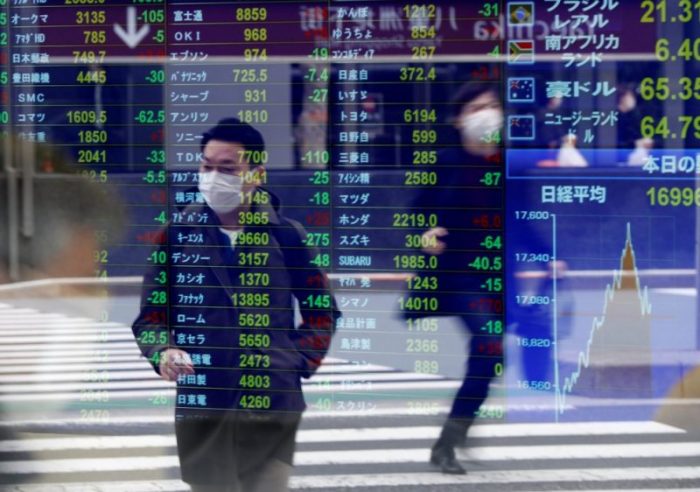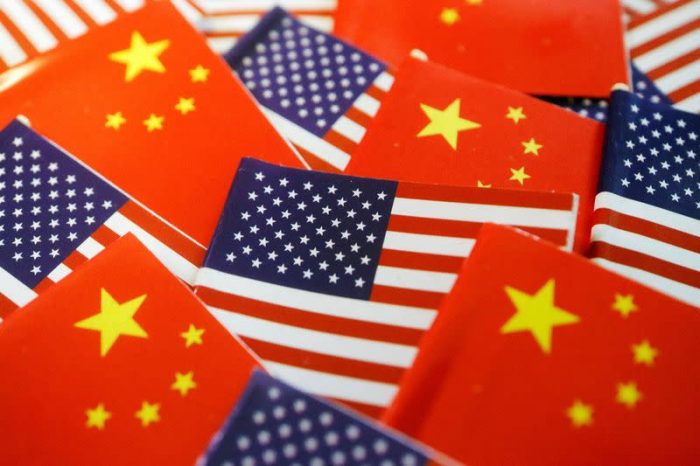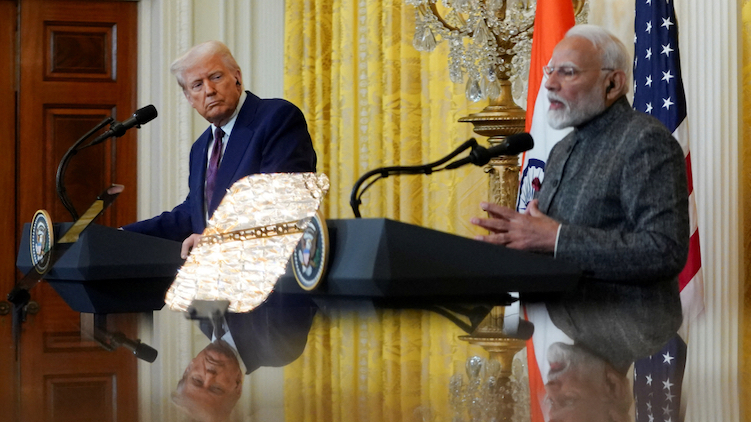Asian markets were hit by negative sentiment on Monday stemming from the rising trade tension between China and the US.
The US dollar also dropped against other major currencies, cutting gains over the past two weeks, amid concern about President Donald Trump’s tariffs and whether they will spur inflation and limit growth.
The greenback started the week on the back foot after Trump said on Friday that he planned to double duties on imports of steel and aluminum to 50% from Wednesday, and as Beijing hit back against accusations it violated an agreement on critical minerals shipments.
ALSO SEE: China Denies Trump Claim, Says It Was US That Broke Trade Deal
The Nikkei in Japan dropped 1.3% to close at 37,470.67, and the Topix fell by 0.87% to 2,777.29. The Kospi in South Korea, however, was flat ahead of the country’s presidential election on Tuesday.
Australia’s ASX 200 edged down 0.24% to close at 8,414.1, while the Hang Seng Index in Hong Kong fell by 1.2% and India’s Nifty 50 was down 0.10%.
China’s Commerce Ministry said on Trump’s claim that Beijing had violated the trade agreement reached in Geneva on May 12 was “groundless.”
Treasury Secretary Scott Bessent said on Sunday Trump and Chinese President Xi Jinping will likely have a call soon to iron problems.
The dollar dropped 0.8% to 142.85 yen as of 0821 GMT, giving back some of its more than 1% rally from last week.
The euro gained 0.66% to $1.1422 to its highest since late April, while sterling advanced 0.67% to $1.3549.
Trump’s latest tariff announcement did little damage to top steel exporter Canada’s dollar, which instead hit its highest in nearly eight months versus the dollar. It was last up 0.5% at 1.3675.
A broader index, which measures the greenback against six major peers eased 0.6% and at 98.751 and was just shy of its April 22 low.
“US protectionist trade policies have raised the risk the US economy enters a period of stagflation which can further undermine the dollar,” Elias Haddad, a senior markets strategist at Brown Brothers Harriman, said.
USD down 5% since tariffs imposed
The US dollar has been whipsawed for weeks by Trump’s on-again-off-again trade war, and investors have been questioning the currency’s safe-haven status as a flare-up in tensions stokes worries of a potential US recession.
The dollar has fallen about 5% against major peers since the April 2 “Liberation Day” tariffs and about 2% in the last two weeks, when Trump threatened 50% levies on Europe and then postponed them.
Last week, the greenback got a bit of respite, rising 0.3% after talks with the European Union got back on track and a US trade court blocked the bulk of Trump’s tariffs on grounds that he overstepped his authority.
An appeals court reinstated the duties a day later, and Trump’s administration said it had other avenues to implement the levies if it loses in court, but many analysts said it showed there were still checks in place on the president’s power.
Goldman Sachs said it expected the 10% tariff floor for major trading partners to remain, in addition to sectoral tariffs.
“The risk remains that if tariffs are impeded, attention may shift to other ways of raising revenues which may be even more negative for the dollar,” Goldman analysts said in a note.
Fiscal worries have also given rise to a broad “Sell America” theme that has seen dollar assets from stocks to Treasury bonds dropping in recent months.
Those concerns come into particular focus this week as the Senate starts considering Trump’s sweeping tax cut and spending bill, which will add an estimated $3.8 trillion to the federal government’s $36.2 trillion in debt over the next decade.
Many senators have already said the bill will need major revisions, and Trump said he welcomed changes.
Section 899 ‘could dent inflows’
The fate of section 899 of the bill could be crucial, according to Barclays analysts.
“S899 would give the US free rein to tax companies and investors from countries deemed to have ‘unfair foreign taxes’ (and) could be seen as a tax on the US capital account at a time when investor nervousness towards US assets has grown,” they said in a research report.
“Actively reducing foreigners’ total return on their US investments would dent inflows and weigh on the dollar, all else equal,” Barclays analysts said.
“While dollar sentiment/positioning remains close to extreme negativity, the path ahead is by no means clear cut.”
Elsewhere, the Australian dollar added 0.70% to $0.64 and the New Zealand dollar rose 0.85% to $0.60.
- Reuters with additional editing by Jim Pollard
ALSO SEE:
Trump’s Tariffs Reinstated as Appeals Court Pauses Trade Ruling
Shipments of US Ethane to China Face Export Licence Uncertainty
US Blocks Chip Design Software, Chemical Shipments to China
Nvidia ‘Plans Low-Cost Blackwell AI Chip For China’ After US Curbs
Beijing Says Latest US Chip Warning Puts Trade Truce at Risk
Mass Layoffs Avoided in China, But Export Sector Badly Shaken
Asian Markets Rise After US, China Agree to Cut Majority of Tariffs
China Lifts Tariff on US Goods to 125%, as ‘Hikes Become a Joke’
Tariffs on Imported Chips to be Announced Soon, Trump Says
Asian Economies Rocked by Trump’s Tariffs, Fears of Trade War
Carmakers Shares Tumble After Trump Announces 25% Auto Tariff























